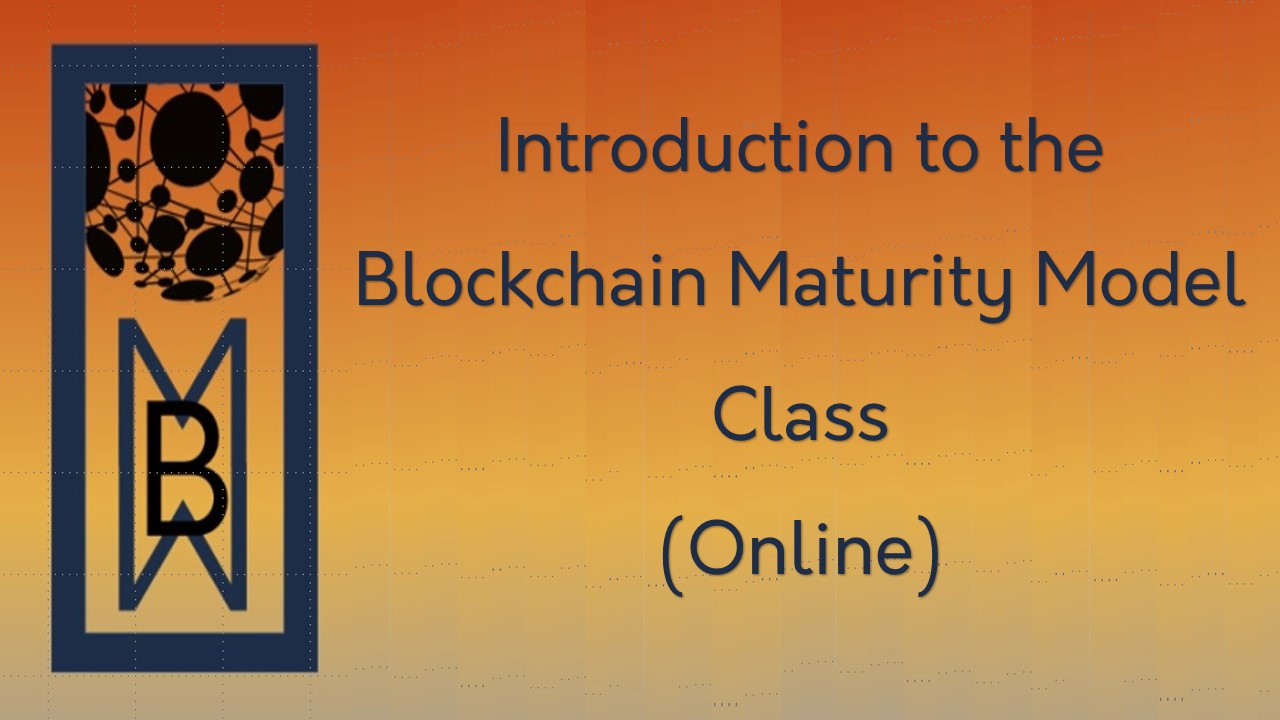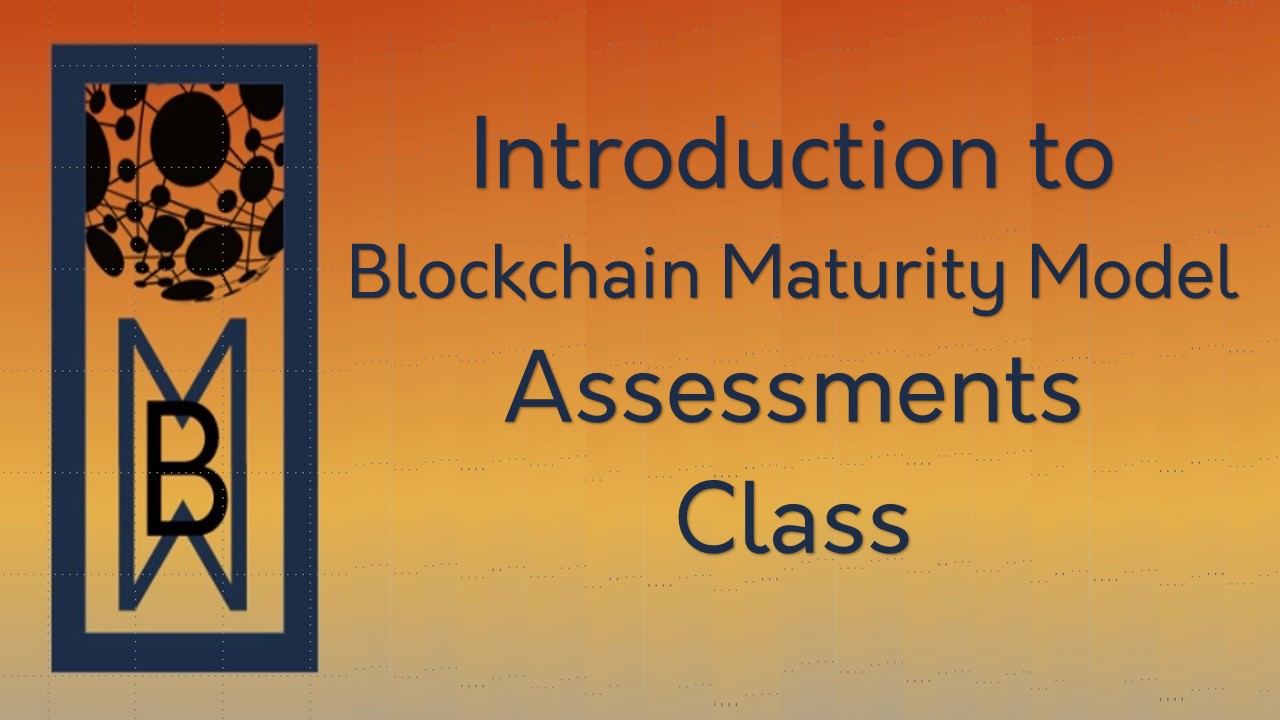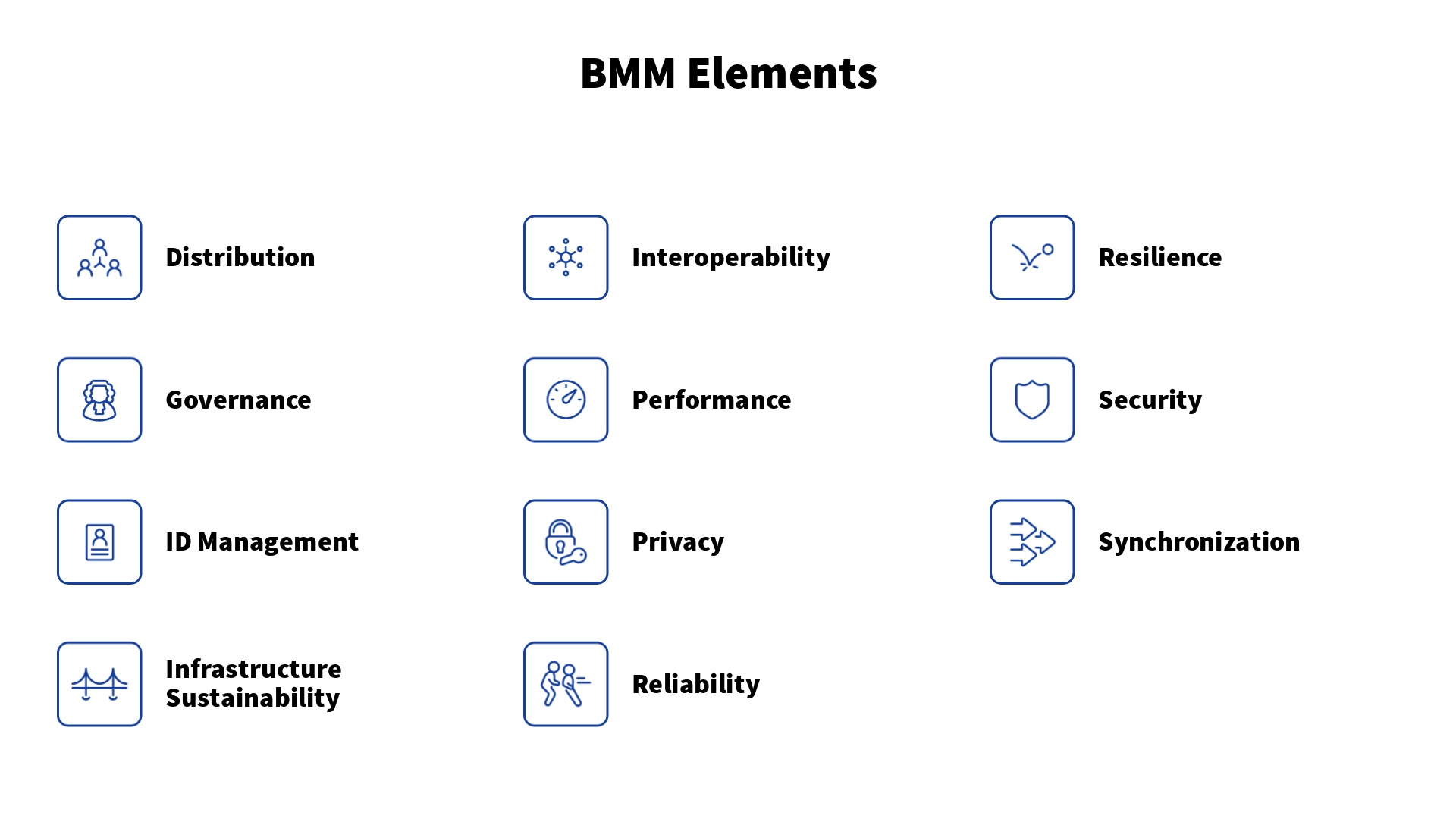Organizations around the world are beginning to acquire blockchain solutions.
The problem is, that they do not have the knowledge or framework to distinguish between a reliable solution and a hyped prototype.
The BMM helps solution providers demonstrate their credibility to potential customers as well as provides a roadmap to continuous improvement.
In some cases, the government can provide financial assistance to use the BMM to improve and demonstrate blockchain solutions.
Download the Blockchain MaturityModel (BMM) Overview Document
Click here to request additional information

$199
The Intro to Blockchain Maturity Model (BMM) Course provides students with a basic understanding of the purpose, structure & content of the GBA BMM. It also provides an overview of the BMM assessment process along with the ways that the BMM can be used by blockchain professionals, solution providers and organizations.
This course is a prerequisite for the BMM Deep Dive Course and the Intro to BMM Assessments Course. All three courses are required to be listed as a BMM Consultant or to be qualified to participate in a BMM Assessment.

$1149
The goal of the training is to describe the purpose, objectives, and processes for managing and delivering BMM Assessments. The BMM assessment training will:
- Explain the purpose and objectives for conducting a BMM Assessment
- Describe the BMM Assessment Process
- Describe the qualifications for participating in a BMM Assessment
- Explain how the BMM Assessment program is managed and maintained.
- Describe the educational, and experience requirements, and career path for becoming a BMM professional.
This course is ideal for blockchain enthusiasts, professionals, and individuals seeking to become a BMM advisor, a BMM assessor or work in blockchain-related fields.

$1149
The goal of the training is to help you understand the different levels of blockchain maturity and the corresponding stages and criteria for self-assessing and improving your organization’s blockchain solution. The BMM deep-dive training will explain the:
- Purpose, goals, and objectives of each BMM element
- Criteria for achieving the goals for each BMM element
- Factors that influence each blockchain maturity level
- Approach for self-assessing your organization’s blockchain maturity
- Criteria for improving your organization’s blockchain maturity
The training would also include case studies of organizations that have successfully implemented blockchain technology.
What is the Structure & Content of the BMM?
The BMM consists of core requirements and domain specific requirements. The core requirements are further divided into functional levels.
What are the BMM Core Requirements
Every blockchain solution should meet a common set of core requirements. For the BMM these core requirements are described as solution elements. They are:

Why Do We Need a Blockchain Maturity Model?
Governments and enterprises around the world are preparing to acquire blockchain solutions. However, most enterprises do not have the knowledge or framework to be able to assess a good blockchain from a bad blockchain. Consequently, they will always default to a traditional solution provider. Newer, agile, and innovative companies cannot compete with traditional government vendors. For this reason, the blockchain maturity model has been established to solve that problem.
What is the Purpose of the Blockchain Maturity Model?
The purpose of this model is to:
- Provide a roadmap to establish, implement, maintain, and continually improve blockchain solutions.
- Demonstrate that a solution can be trusted to meet industry standards.
- Provide acquisition professionals with the information needed to evaluate blockchain solutions.
- Establish the criteria to achieve a Government Blockchain Association (GBA) certification.
Who Developed the BMM?
The BMM was developed by the GBA Standards & Certification Working Group over two years. This group includes 34 individuals from government and the private sector. Members of this group include Chief Information Officers, Chief Technical Officers, engineers, auditors, business executives, & managers.

